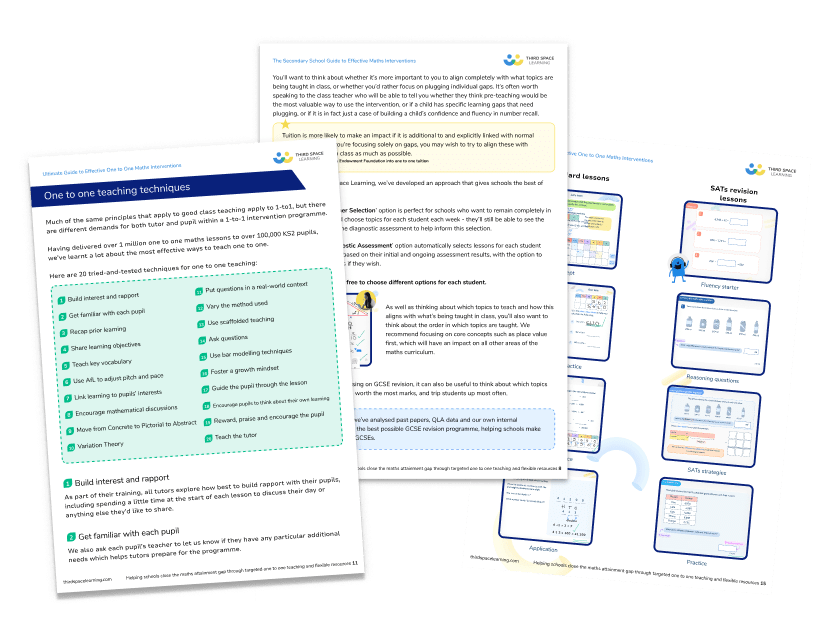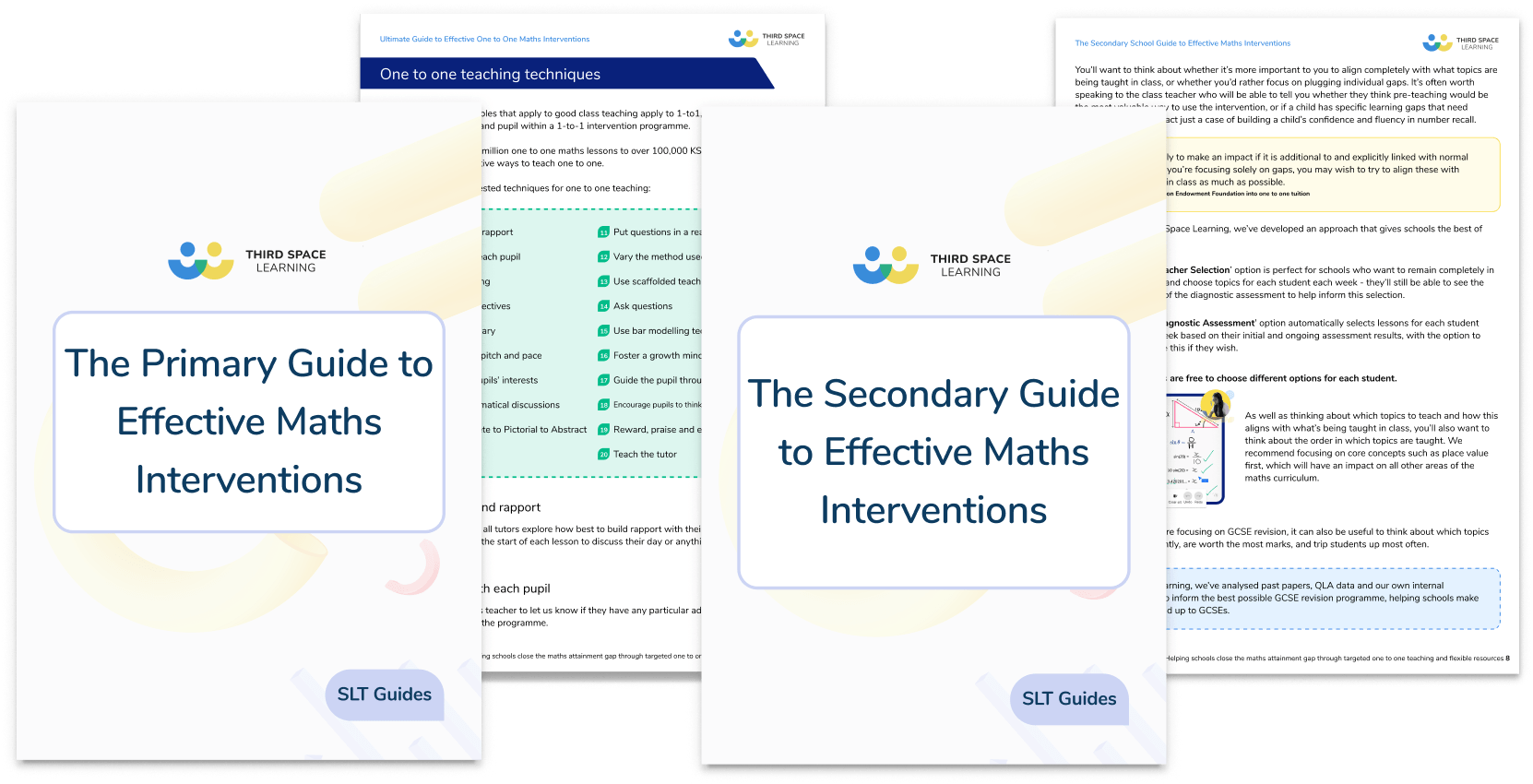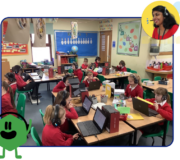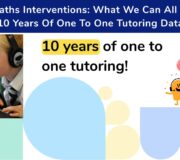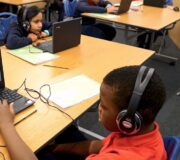Our Biggest Tutoring Overhaul In 10 Years: 5 Learnings For Your School
With any maths intervention programme, it’s essential to look at the data to understand what has worked for the pupils in your school in the past and what hasn’t.
With 10 years of experience providing maths tutoring for schools, we’re lucky to have data from 4,000 schools and over 2,000,000 one-to-one tutoring sessions to draw on. Using this data – alongside insights from teacher surveys, focus groups and research calls – we’ve completed the biggest-ever overhaul to our tutoring approach since we began in 2013.
The principles of our intervention remain the same as they always have – to focus on providing personalised one to one maths support for schools in way that works with their limited time, budget and resources. What has changed is where our insights showed we could go even further.
In this blog, we’re sharing these insights with you so when you next review your maths interventions or tutoring approach you have all the information you need to ensure maximum impact on your school and pupils.
There were five key areas that came out of this research, and therefore five changes that we made to our tutoring platform:
- Greater focus on specific goal setting for the entire programme
- Diagnostic assessments on their own are not always sufficient
- Staff need to be able to choose their level of involvement in lesson selection
- Formative assessment combined with more adaptable lessons leads to even greater personalisation
- Feedback to class teachers and SLT needs to be instant and actionable
Did you know that 100% of teachers surveyed agree that the new Third Space Learning platform is easier to use than the old one?
Ultimate Guide to Effective Maths Interventions [FREE]
Find out how to plan, manage, and teach one to one (and small group) maths interventions in primary and secondary schools. Includes a 20-point checklist of techniques to improve your one-to-one teaching.
Download Free Now!1. Greater focus on specific goal setting
All pupils have unique needs and areas of weakness. This is why the goals for your intervention programmes should be as specific as possible, allowing teachers to select programmes based on each pupil’s starting point, as well as their desired endpoint.
Previously, schools using Third Space Learning could choose programmes for each year group, with specific exam revision programmes also available for SATs and GCSE.
However, when speaking with our schools and analysing our data, it became clear that there is a wide range of pupil needs even within these programmes.

Schools now have a choice of 22 goal-specific programmes, each one containing 20 specially created lessons designed specifically by our team of expert former teachers to help pupils move towards each programme’s goal:
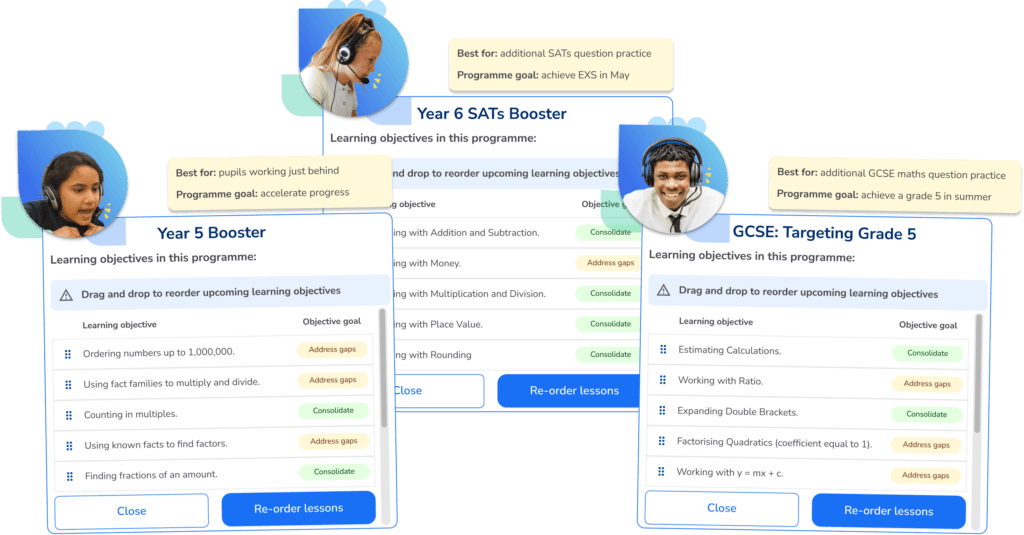
Each of our primary programmes has been designed by primary subject matter experts to address the gaps that KS2 pupils are likely to have in these contexts and prepare pupils for KS2 assessments:
- For pupils who are working significantly behind who would benefit from revisiting objectives from previous years, our Foundation Programmes are designed to close gaps.
- For pupils working just behind the expectations for their current year, our Booster Programmes are designed to accelerate progress.
- For Year 6 pupils who are ready to move on to SATs-style question practice, the SATs Revision Programme is designed to help pupils achieve EXS in May.
- For Year 5 pupils who need extra support in the summer term, the Year 5 Ready to Progress Programme is designed to prepare pupils for Year 6.
Each of our secondary programmes has been built by secondary maths teachers to support the transition from KS2 to KS3, and help GCSE students achieve their target maths grade:
- 4 KS3 programmes are available to support students depending on how far back their gaps go and what support they need, ranging from programmes designed to address outstanding gaps from KS2 to programmes to prepare students for KS4
- 5 GCSE programmes to choose from depending on each student’s target grade, with programmes available for grade 3 to grade 7
When organising maths interventions for your own pupils, consider each of their goals carefully. Then spend some time making sure the content they’re covering in their interventions is aligned with their goals.
Having a bank of lessons and resources aligned to each goal will save time and ensure interventions are as focused on the goal as possible.
2. Diagnostic assessments on their own are not always sufficient
There’s no doubt that diagnostic assessments are an essential piece of the puzzle when building a picture of a child’s understanding. But when relied on in isolation they could actually make your intervention less effective:
- Pupils sometimes guess in their initial assessments;
- The time between assessments and tutoring sessions can mean the results are no longer as accurate as they were;
- Even if a pupil has shown they understand a concept in their initial assessment, they would often still benefit from having an opportunity to revisit and recap that objective;
- Teachers have an excellent understanding of pupil gaps, so they need to be able to use this insight to inform each pupil’s lesson pathway;
- Diagnostic assessments can only assess at one point in time, whereas tutors can assess throughout each lesson to address gaps and misconceptions in real time.
Introducing a new triangulated approach to assessment
We knew we could do even more to personalise learning in our tutoring effectively, so we developed a brand new triangulated approach to assessment.
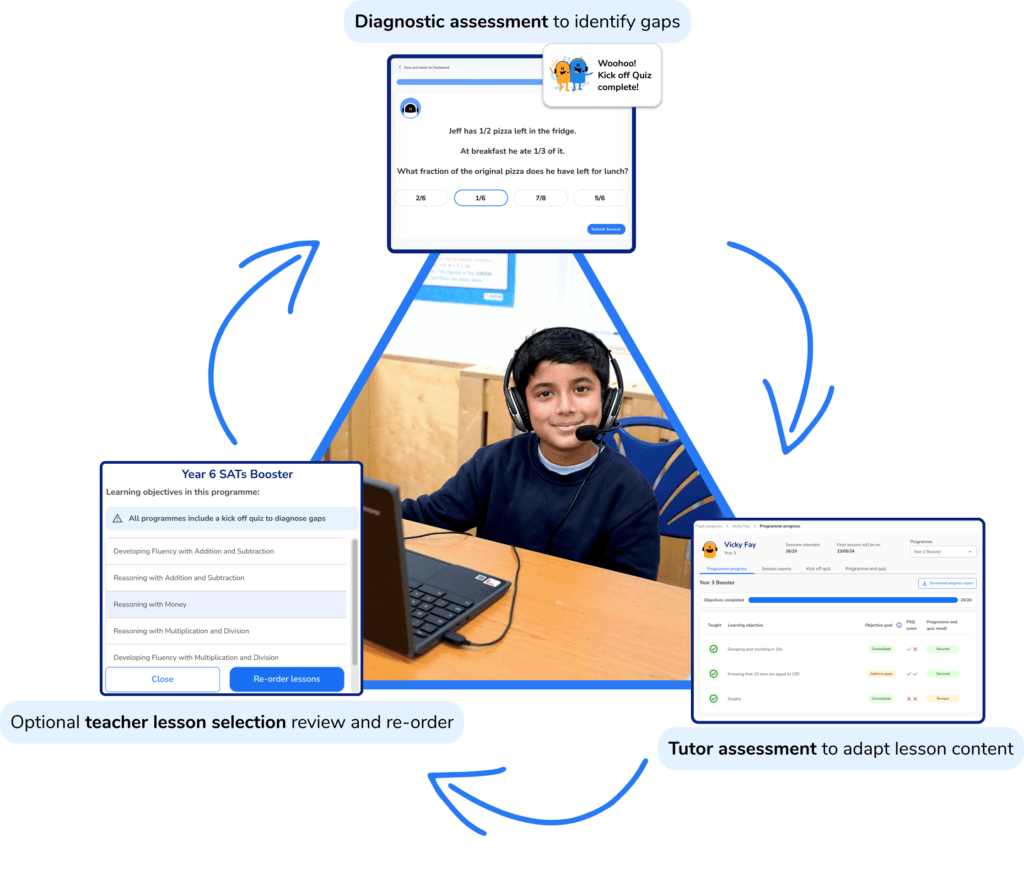
- Diagnostic assessment: An initial assessment before the intervention begins to establish baseline knowledge of topic areas.
- Tutor assessment: Using the results of the diagnostic assessment, alongside the understanding demonstrated by the pupil at the beginning of a session, the tutor customises the lesson and chooses the most appropriate approach for that session. This allows the tutor to consolidate topics where the pupil is more confident and address gaps where required.
- Teacher lesson selection: Teachers have the option to review and re-order lessons at their discretion at any point, allowing knowledge gaps to be addressed or aligning lessons with in-class teaching.
When personalising your own intervention approach, consider each of these assessment points to ensure the intervention is as effective as possible.
You can find free diagnostic assessments online, which you can overlay with teacher insight and assessment.
RELATED FREE RESOURCES
Finally, make sure there are plenty of opportunities for formative assessment during intervention sessions, and that intervention leads are trained to adapt their teaching accordingly.
3. Lesson flexibility is key for staff
Tutoring, like any intervention, works best with teachers in control, but striking a balance between saving teacher time and allowing them control is not always easy.
That’s why flexibility is key: an intervention approach that relies solely on assessments might miss valuable teacher insights, but an intervention that requires teachers to do all the planning isn’t sustainable.
This flexibility has always been part of our approach at Third Space Learning, but we felt we could do even better.
Where previously we gave schools the choice of one or the other, they now get the best of both worlds.
Each of our tutoring programmes is made up of 20 carefully selected lessons designed to best meet the programme’s goal. Tutors progress through the lessons in the most appropriate way to meet each pupil’s needs according to the results of their diagnostic and in-session assessments.
At any point in the programme, teachers are free to review and re-order lessons. They can easily choose to do this based on each pupil’s assessment results or to match their own classroom teaching.
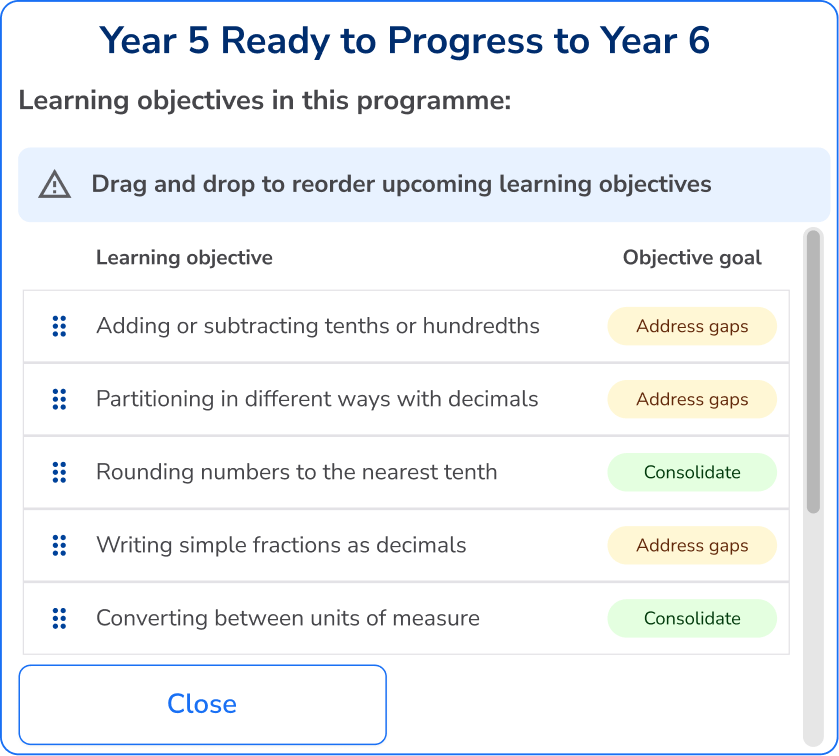
Communication between class teachers and intervention leads is key to achieving this balance – if you can find a way to make this communication quick and easy, even better!

4. Formative assessment + adaptable lessons = even greater personalisation
Personalisation should go beyond simply selecting the right programme for each pupil. Once an intervention session begins, there are many more opportunities to adapt and adjust.
With our team of highly trained maths specialist tutors, our Curriculum Team wanted to do even more to ensure they had the tools they needed to respond to pupils’ needs in real-time.
Taking this more personalised approach to interventions means pupils can progress more quickly through areas where they feel more confident, while still receiving vital opportunities for recapping, reinforcing and extending their knowledge.

Our tutoring lessons have always been made up of scaffolded teaching slides, but all lessons now begin with an additional structured tutor-led assessment, allowing tutors to choose the most appropriate pathway through that lesson according to the pupil’s needs:
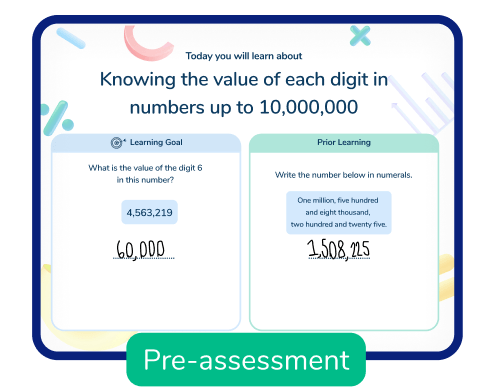
If pupils struggle with the learning goal or prior learning questions, tutors can begin the lesson by securing prerequisite knowledge first:
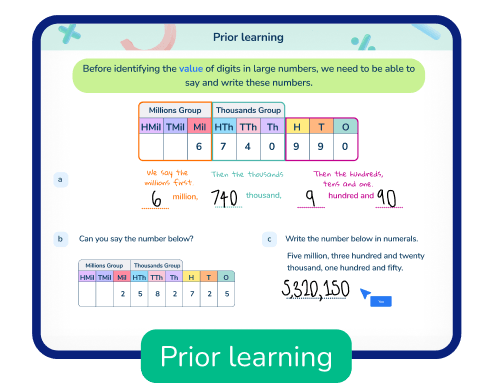
If, during the assessment at the start of the lesson pupils show they’re ready, tutors can begin with the scaffolded teaching slides, missing out the prior learning slide:
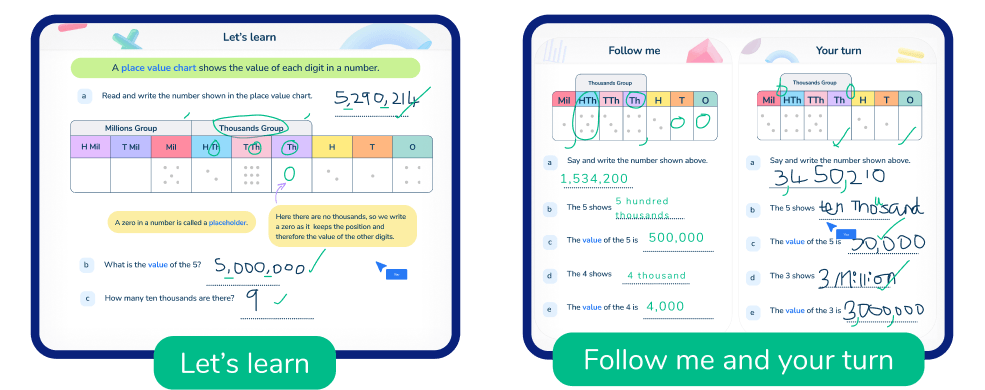
Or, if pupils have shown that they already have a solid understanding of this concept, tutors can go straight to the ‘you do’ portion of the lesson:
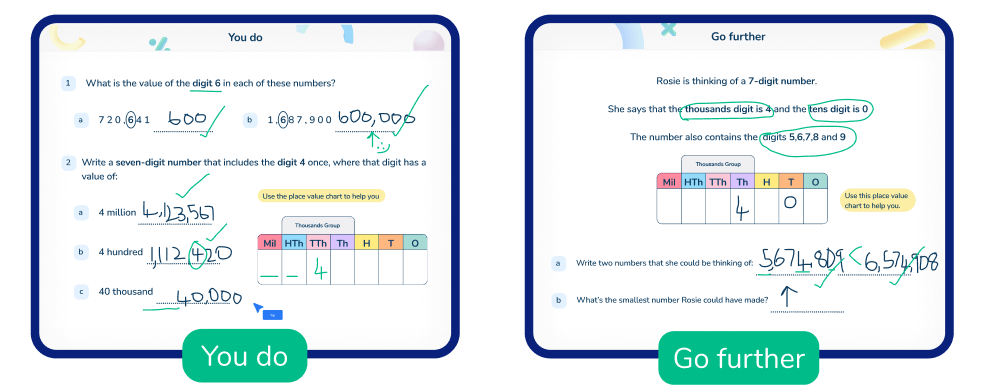
This flow chart shows how these adaptable pathways look in action:
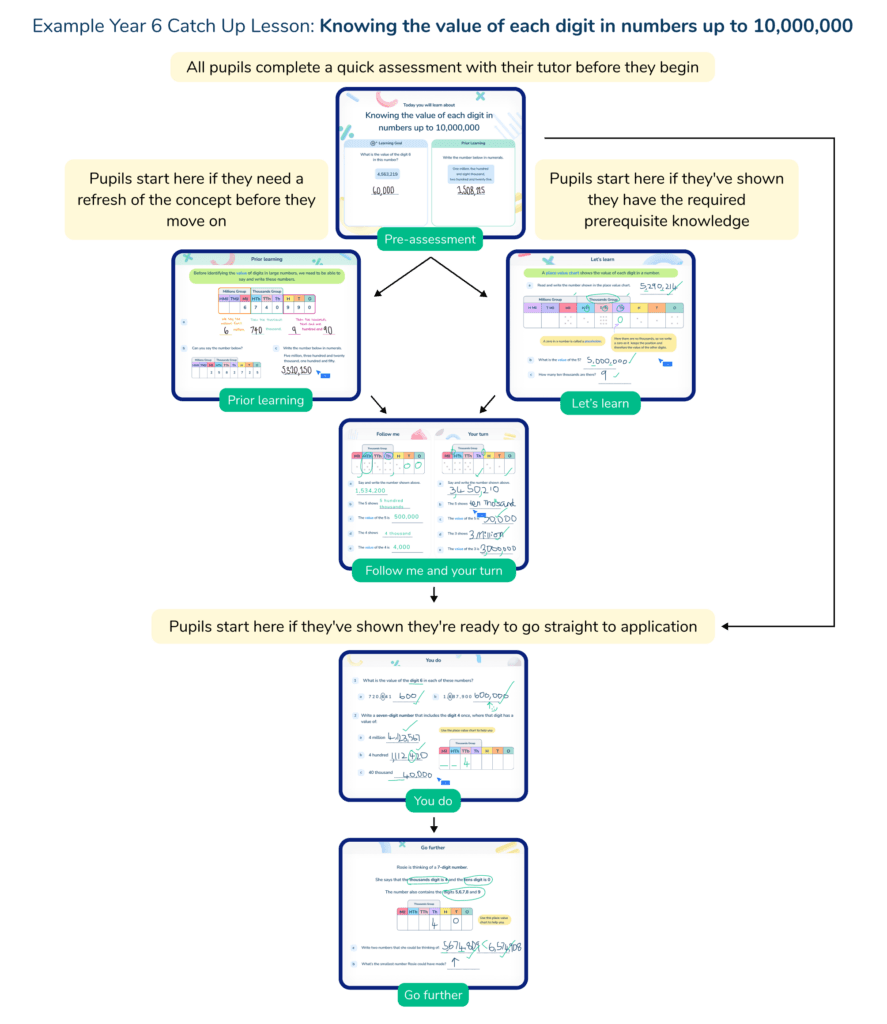
5. Feedback to class teachers and SLT needs to be instant and actionable
Interventions are only successful when teachers can monitor progress to both assess their effectiveness and inform subsequent class teaching.
While on-demand reports have always been available for schools using Third Space Learning, we’ve given them a huge update to bring key insights to the surface instantly:
- Which gaps were identified for each pupil in their initial diagnostic assessment
- How pupils got on in individual sessions, including pupil and tutor feedback
- How pupils performed in their post-session assessments
- How pupils are progressing over time
- How pupils performed in their programme end quiz
- Which gaps are still outstanding at the end of the programme, if applicable
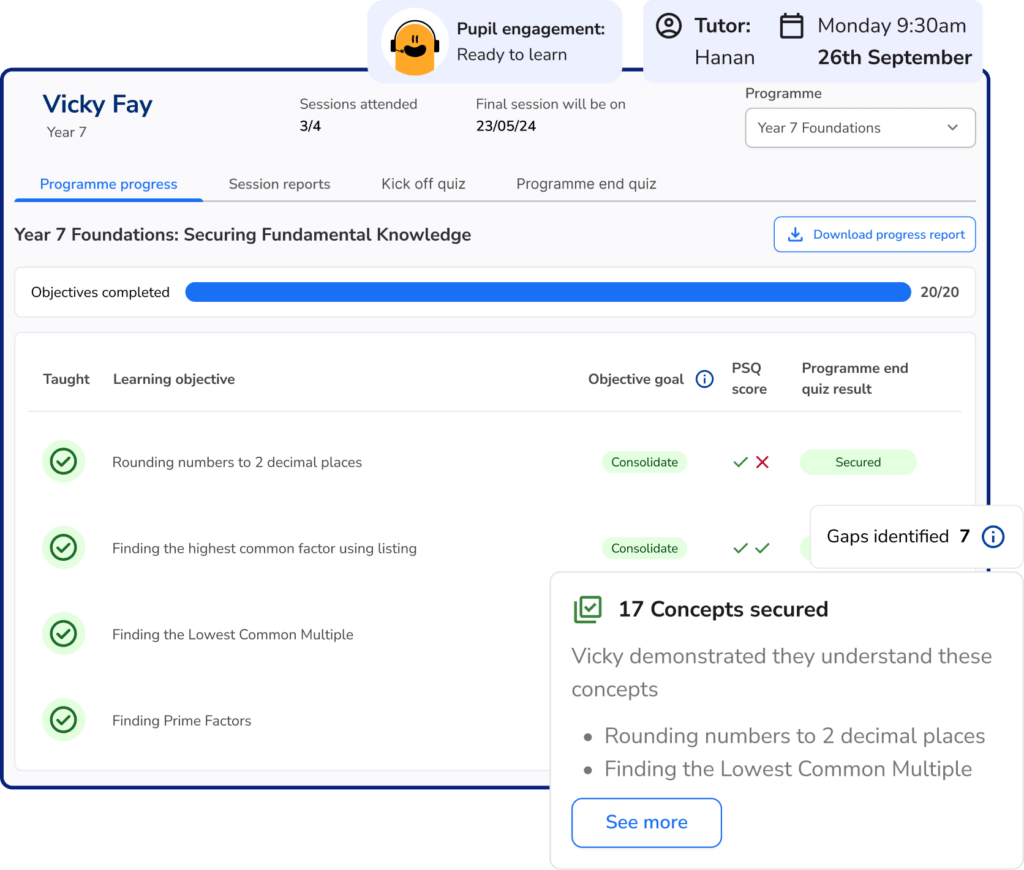
When planning your own interventions, it’s key to factor in not only how you will report on progress, but what exactly you will report on. The more insights you can relay back to teachers and SLT, the more progress your pupils will make – in and out of intervention sessions.
The icing on the cake…
Efficiency is crucial for teachers who are short on time, so the icing on the cake of our brand-new tutoring experience is a complete makeover of our online platform. This all-new look and feel offers an intuitive, user-friendly experience, allowing teachers to find what they’re looking for quickly and giving them back more time to do what they do best – teach.
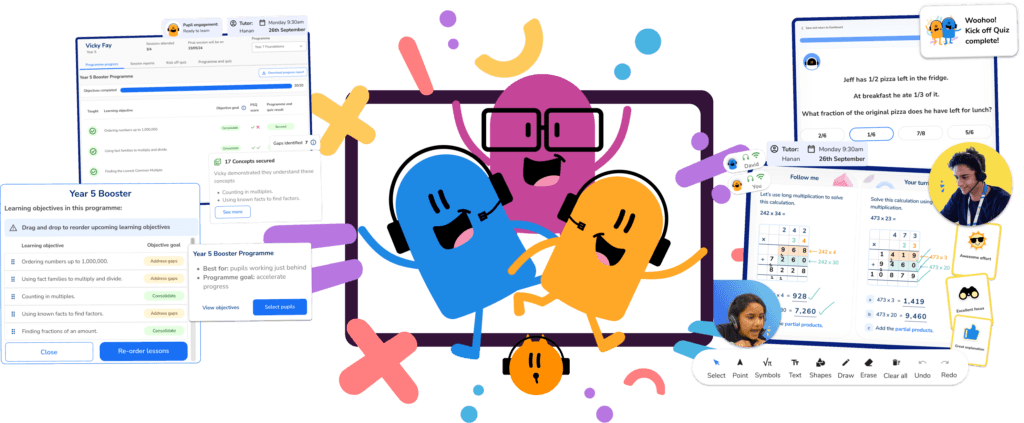
Intervention programmes can be difficult to master, with lots of elements to perfect and so many factors at play in individual pupils.
With a decade of experience and one-to-one tutoring data behind us, Third Space Learning’s maths intervention is a reliable way to offer personalised tutoring to pupils who need it most.

DO YOU HAVE STUDENTS WHO NEED MORE SUPPORT IN MATHS?
Every week Third Space Learning’s maths specialist tutors support thousands of students across hundreds of schools with weekly online maths tuition designed to plug gaps and boost progress.
Since 2013 these personalised one to one lessons have helped over 169,000 primary and secondary students become more confident, able mathematicians.
Learn about our experience with schools or request a personalised quote for your school to speak to us about your school’s needs and how we can help.
